In May 2021, the Victorian Government announced a $179.4 million funding package to kick-start the Fishermans Bend Innovation Precinct.
The investment will fund a major transformation and renewal of the former General Motors Holden site at Fishermans Bend by 2025, creating an investment-ready, world-class, advanced manufacturing, engineering and design precinct.
The Innovation Precinct will ensure Victoria remains a powerhouse in manufacturing and support thousands of high value jobs in defence, aerospace, clean energy and transport sectors.
The Victorian Government has a clear vision for the Innovation Precinct as ‘an internationally renowned centre of innovation in advanced manufacturing, engineering and design’.
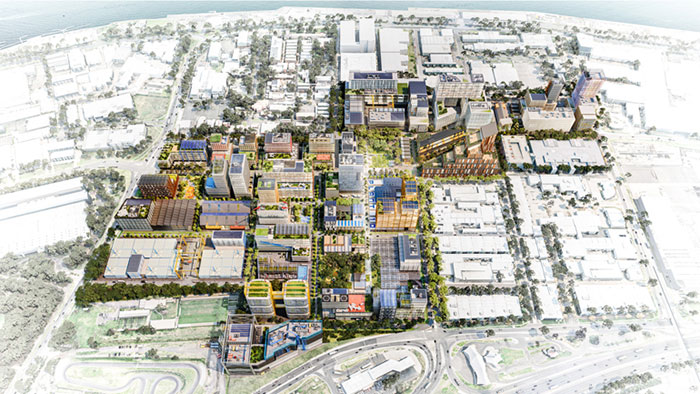
Elevated aerial view of the new world class Innovation Precinct in the
former General Motors Holden site (digital render). Artists impression year 2050.
Recognising the unique opportunity at the time, the Victorian Government purchased the former GMH production site in 2016 to support, catalyse and curate an innovation ecosystem to unlock the next wave of growth and evolution in Fishermans Bend. The former GMH site of approximately 32 hectares sits in the heart of the broader Fishermans Bend NEIC (approximately 230 hectares), right at the doorstep of one of the world’s most liveable cities, Melbourne.
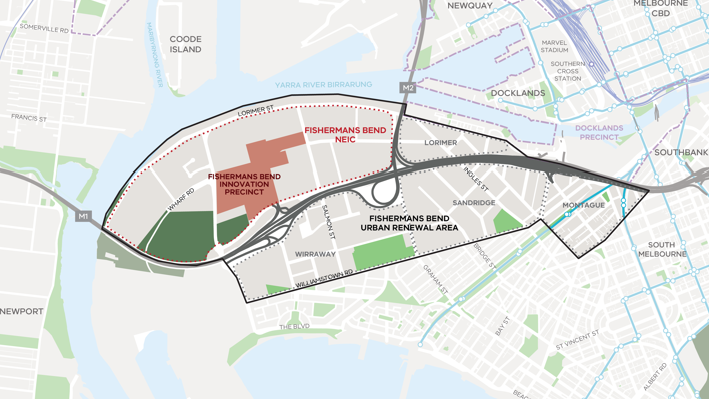
The Innovation Precinct will sit within the broader Fishermans Bend area
The University of Melbourne is committed to the site and plans to open a new engineering campus at the Fishermans Bend Innovation Precinct. The presence of world-leading engineering and design research alongside start-ups, scale-ups, investors and key industry partners will turbo charge the collaboration and partnerships that drive innovation.
The Fishermans Bend Innovation Precinct will drive private sector investment into Victoria and see key industry players and education and research organisations work together to grow our advanced manufacturing capacity and create thousands of high value jobs.
The site is being designed and constructed to deliver a vibrant innovation precinct, capable of attracting the very best firms and the brightest global talent.
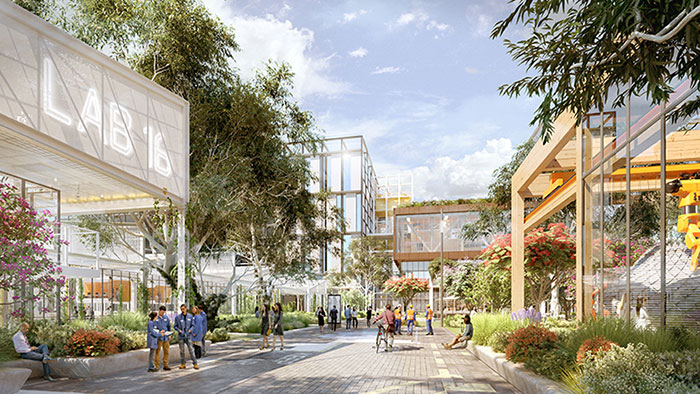
Digital render of public open space in new Innovation Precinct,
promoting collaboration, connectivity and sustainability. Artists impression year 2050.
Innovation Precinct a perfect catalyst for change across the Fishermans Bend National Employment and Innovation Cluster (NEIC)
The Innovation Precinct sits within the Fishermans Bend NEIC, which has a proud legacy of turning bold ideas into tried and tested products, from the roll-out of the first Australian-designed and built production vehicle to the development of world-leading carbon fibre technology utilised on the largest and most complex aircraft.
Already home to world-leading advanced manufacturers and engineers including Boeing, the Commonwealth’s Defence Science and Technology facility and Siemens, the vision for the NEIC is to host 40,000 jobs and be Australia’s premier location for innovators and an internationally renowned centre of innovation in advanced manufacturing, engineering and design.
The Fishermans Bend Innovation Precinct at the former GMH site is a key catalyst project for Fishermans Bend and showcases the transition of the NEIC into one of Australia's leading places for technology and innovation.
What is an ‘Innovation Precinct’?
Innovation precincts are areas where leading anchor institutions and companies are clustered with start-ups, business incubators and accelerators. Brought together, these organisations connect and collaborate, spurring on greater economic development – and greater innovation.
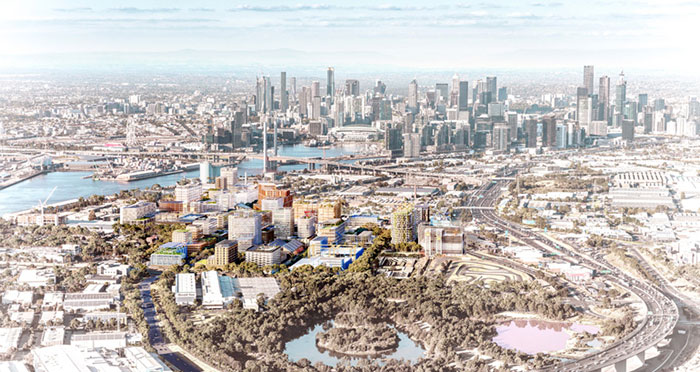
Aerial view of the Innovation Precinct in Fishermans Bend,
approx. four kilometres from the CBD (digital render). Artists impression year 2050.
Global thought leaders, the Brookings Institution, note:
“Innovation precincts facilitate the creation and commercialization of new ideas and support metropolitan economies by growing jobs in ways that leverage their distinct economic attributes. These districts build on and revalue the intrinsic qualities of cities: proximity, density, authenticity, and vibrant places.”
In planning for innovation precincts, the Brookings Institution have identified the importance of three interrelated assets required to support a strong innovation ecosystem:
- Economic assets: the companies, institutions and organisations that drive, cultivate or support a rich innovation environment.
- Physical assets: publicly or privately-owned spaces including streets, open spaces and other infrastructure, designed and organised to stimulate new and higher levels of connectivity, collaboration and innovation.
- Networking assets: the relationships between people, companies and places that facilitate the generation of ideas and advances in commercialisation.
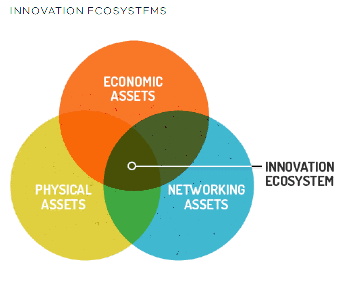
All innovation districts contain economic, physical, and networking assets. Image from the Brookings Institution
Page last updated: 10/10/24